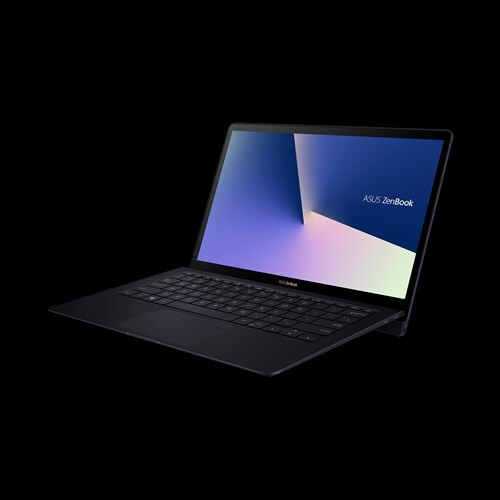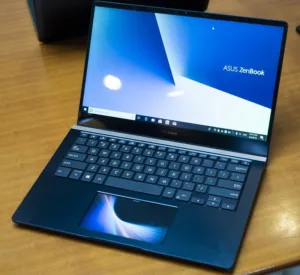Asus announced new notebooks at Computex, with three new VivoBooks all based on 8th Generation Intel Core processors and three new ZenBook notebooks. The ZenBook Pro 15 uses an i9 processor in the top configuration and has Nvidia GeForce GTX1050 GPU with up to 1TB in SSD storage as well as Thunderbolt 3 ports. The ZenBook Pro is available with 14″ (84% screen to body, FullHD IPS with 100% sRGB and 5.2mm bezel) and 15.6″ (86% screen to body, FullHD or UltraHD with touch, FullHD without – 72%NTSC for FullHD, AdobeRGB for UltraHD) displays, and is also available in a 13.3″ format as the ZenBook S. The ZenBook S is available with screen options up to UltraHD with touch. The UltraHD 15.6″, as well as supporting WCG, is claimed to have a Delta E accuracy of <2 (and is said to have been validated by Pantone)
An unusual feature of the ZenBOoks is the use of a glass covered 5.5″ touch display as a trackpad. You can find a video of the pad here.
The VivoBooks are available with 15.6″ FullHD 86% screen to body display ( VivoBook S15 (S530)), 14″ FullHD (ZenBook Pro 14 (UX480)) and 13.3″ ZenBook S (UX391). The 13.3″ version is available with an UltraHD glossy touchscreen, while the FullHD option is available in glossy or anti-glare finishes and has a 5.9mm-thin bezel with 85% screen-to-body ratio and with 100% sRGB color gamut. The S has dual ThunderBolt 3 ports as well as a USB Type C connector.
 The Asus 13.3″ ZenBook S is available with glare or non-glare display and the keyboard is at an angle for easier typing.
The Asus 13.3″ ZenBook S is available with glare or non-glare display and the keyboard is at an angle for easier typing.
Analyst Comment
The touchpad with the display is an interesting concept, but I have been watching people try this kind of concept since the Apricot PC back in the 1980s. The value really depends on the support by software companies, which can exploit it and that really depends on a number of brands having the same feature. I’d like it to be successful, but without a Wintel push, experience suggests that it is unlikely. I’d be happy to be wrong, though! (BR)

